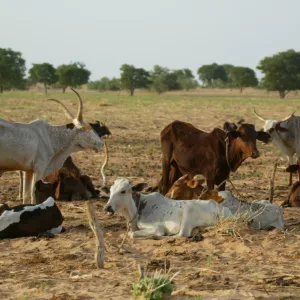Searching for easy indicators for degraded tropical pastureland soils
Habtamu Sibilu sets a dynamic cone penetrometer upright on a flat patch of grass. He lifts up the weight, drops it and records how many centimetres into the soil the penetrometer penetrates. After doing this as many times as it takes to reach 20 cm deep into the soil, Sibilu looks over his shoulder to check if the water in

Searching for easy indicators for degraded tropical pastureland soils
Habtamu Sibilu sets a dynamic cone penetrometer upright on a flat patch of grass. He lifts up the weight, drops it and records how many centimetres into the soil the penetrometer penetrates.
After doing this as many times as it takes to reach 20 cm deep into the soil, Sibilu looks over his shoulder to check if the water in his infiltration experiment has drained into the soil.
Both of these experiments sit next to a soil pit 50 cm deep, where he’s taking soil samples at different depths to measure bulk density, soil aggregate stability and chemical and physical properties of the soils.
Sibilu is a PhD student at the Technical University of Munich and is co-supervised by Sonja Leitner, senior scientist at the International Livestock Research Institute, Mariana Rufino, professor at the Technical University of Munich, and John Quinton, professor at Lancaster University.
He is investigating soil physical indicators that will indicate if soils in western Kenya are degraded and which are not.
All of his experiments have an interconnected goal: to find a method that is easy for other researchers and the community to use and accessible to set up.
Photo: Cattle in a crop field in Niger (credit: ILRI/Stevie Mann)

